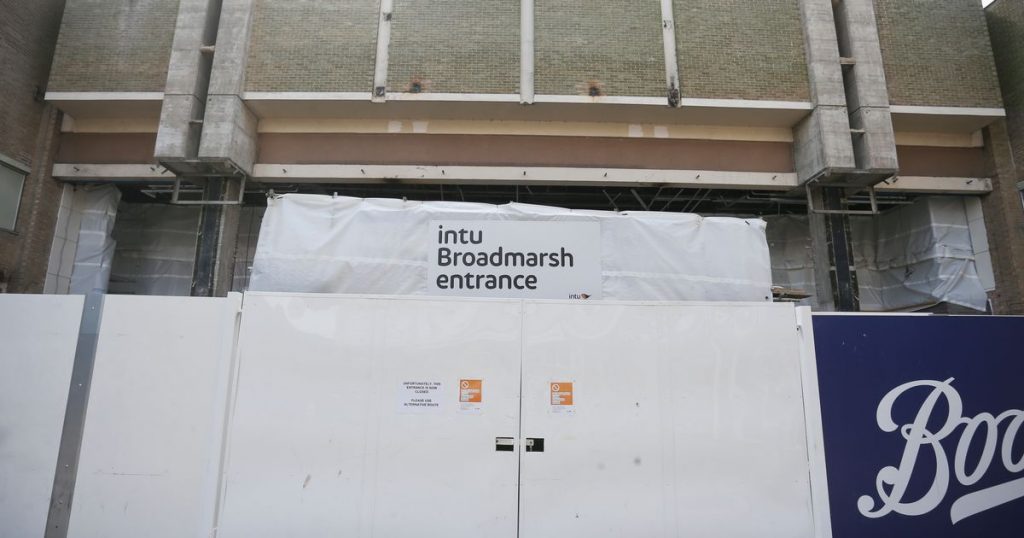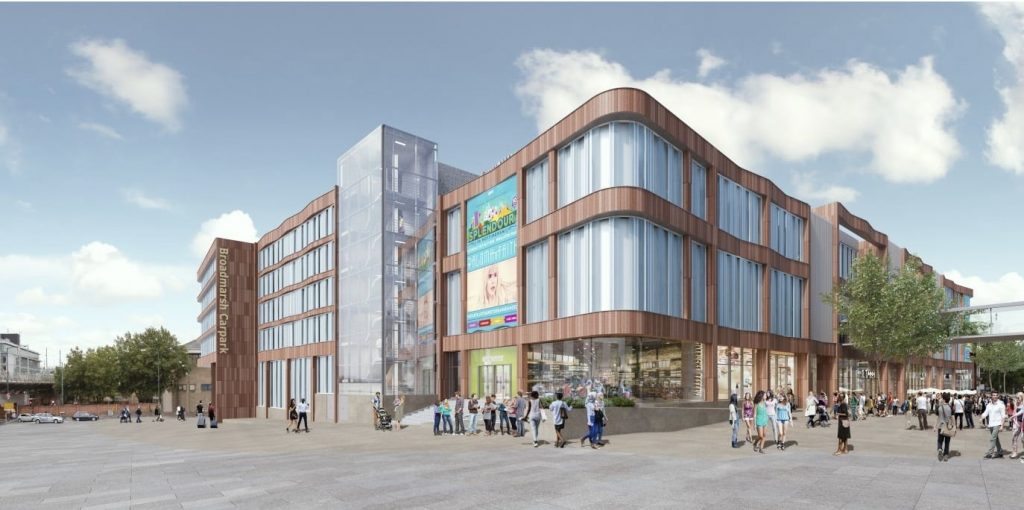
As a youth, we would get the bus from Cotgrave to town every Saturday and hang about the Broadmarsh all day. Highlights included: jumping in trolleys and zooming down to the bus station, gawping at posters in Athena, wondering what a bender in a bap was at Wimpy (and why there weren’t more Wimpys) and causing havoc in the department stores to get chased by the security guard. In 2009 I tracked down the security guard who used to chase us (Eagon Chambers) and interviewed him for LeftLion.
I have no other fond memories of the Broadmarsh.
Today, it’s an ugly grey concrete lump that blocks your view of the city. I feel ashamed that it’s the first thing people see when they get off the train and head towards town. What message does this say about our city, our ambitions, our values? When the coronavirus lockdown brought a grinding halt to the intu redevelopment plan, I was ecstatic. The last thing Nottingham needed was another generic shopping centre like every other city. Now the council is forced to think differently and more imaginatively about city planning. Hallelujah.
The council is under enormous pressure at the moment as it faces bankruptcy after losing 38million in the failed Robin Hood Energy scheme and the various impacts of Covid on city life. Therefore, the temptation will (understandably) be focused on job creation and monetisation of public space. But we need to ride the storm. This is an incredible opportunity to do something different. We’re meant to be the rebel city, why not rebel against convention and tradition? We can do this by turning to our heritage.
A century before the industrial revolution, Nottingham was known as The Garden City due to its rich green landscape. We are home to Sherwood Forest and a certain bow selector. Let’s build on this heritage by striving to become a green city. Pop up markets and shops will provide the flexibility that covid demands as well as spaces for independents – many of whom will need support now that start-ups are becoming one of the most viable forms of employment as Arcadia etc headbutt the pavement.
The way we consume culture now is different. We stream, subscribe and share. Therefore, city space needs to reflect this fluidity. We need benches, trees, parks (think Henry Kirke White and Clifton Grove), places to commune, sit and reflect. Areas for gathering. Areas for communities. Yes, you can lob in a couple of coffee shops. Walls could be used to project artwork and films. But above all, keep it green. Replace pavements with pastures. Give us air we can breathe for once. In 2019, research found that poor air quality in Nottingham was responsible for more deaths than alcohol and road incidents combined.
My dream scenario would take inspiration from the ‘Gardens by the Bay’ in Singapore. Creating something green, iconic, and unique would generate tourism, giving people a proper reason to visit Nottingham. And you can still have your shops, just not here. A promenade of trees leading up to Market Square would drive the masses to Primani et all, thereby drawing clear distinctions in city space. Listen to people like Sarah Manton and the People’s Forest project which aims to reconnect Sherwood Forest with Nottingham. They will help you create a green trail through the city.
The redesigned Central Library would be the epicentre of this design. A place that values ideas, community, and imagination, with the snout of the Contemporary poking out in the distance. Nottingham’s new anthem will be the Stealers Wheels, with tourists singing: “The castle to the left of me! Nottingham College to the right! Here I am stuck in the library with you.”
If I’d have had a great green lump of grass greeting me in the 1980s, and the colours and smells of nature enticing me to sit down and be calm, I doubt I’d have felt the need to be so chelpy with security guards as a youth.
You can have your say about the future of the Broadmarsh Centre by visiting the Creative Quarter website and completing the public survey or business survey. The surveys are open until the 27 December 2020

